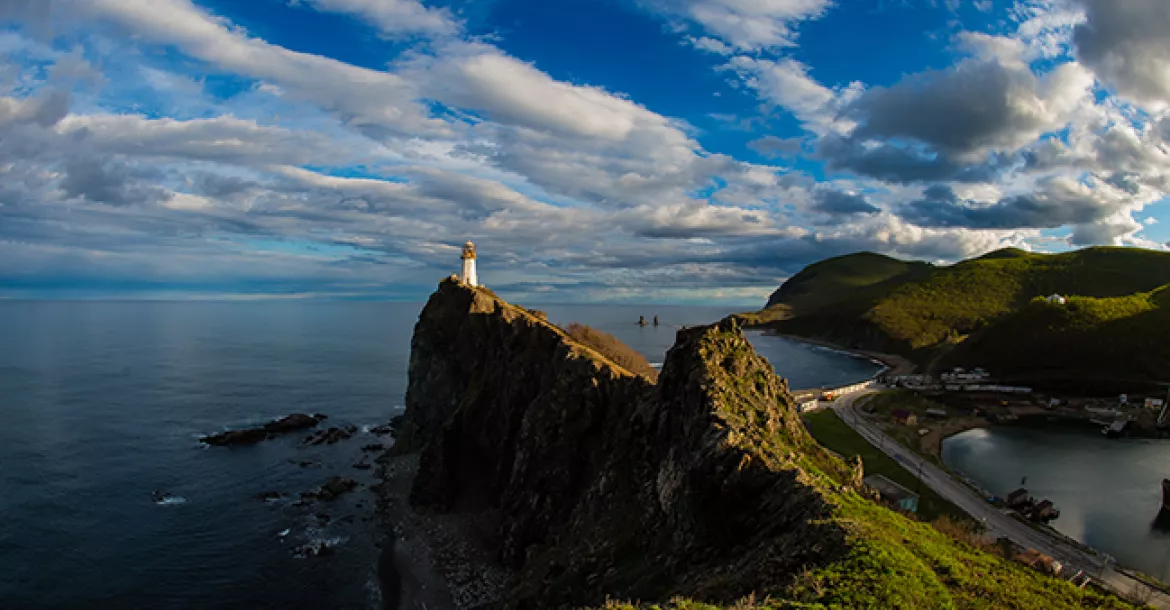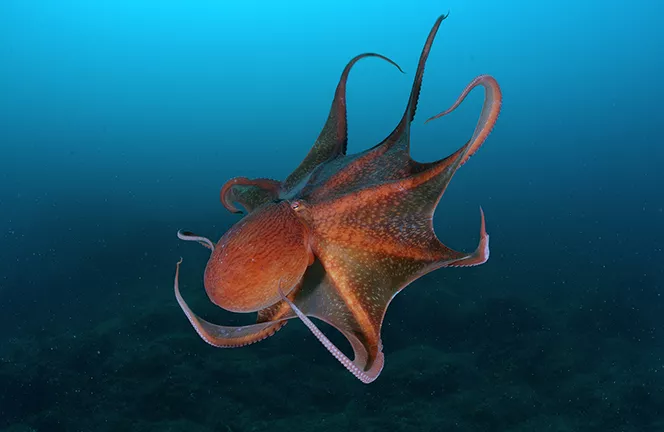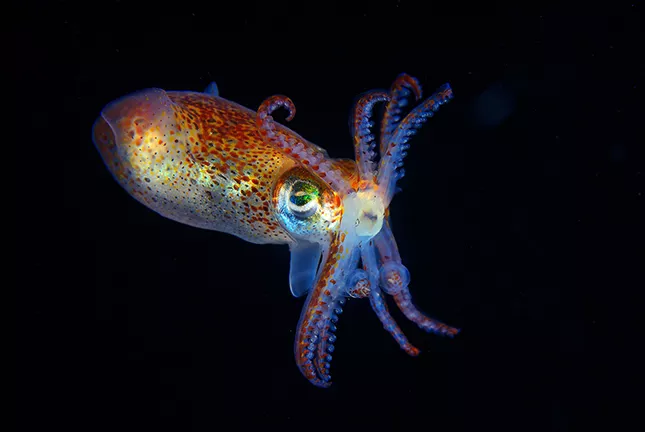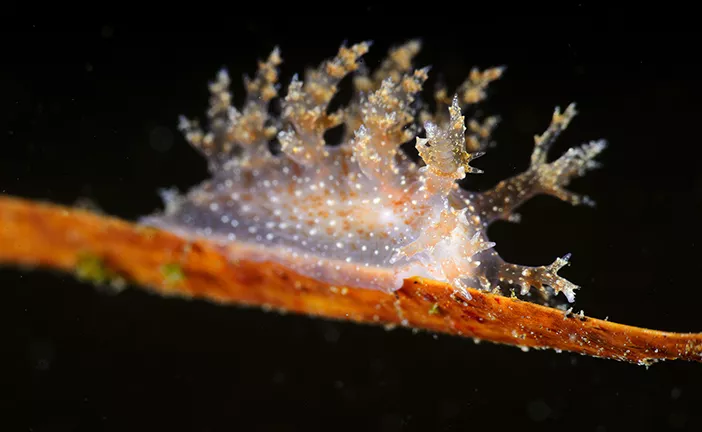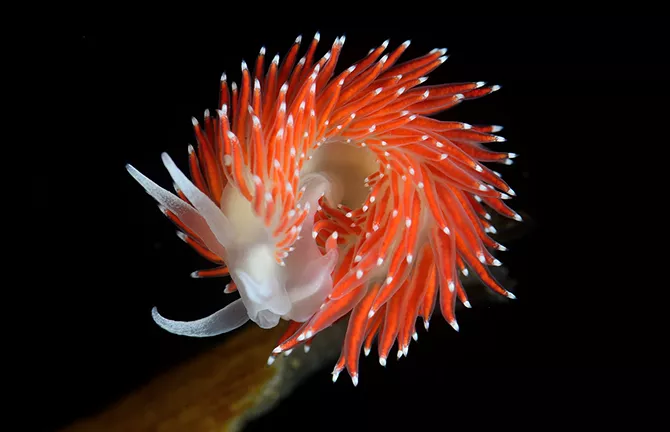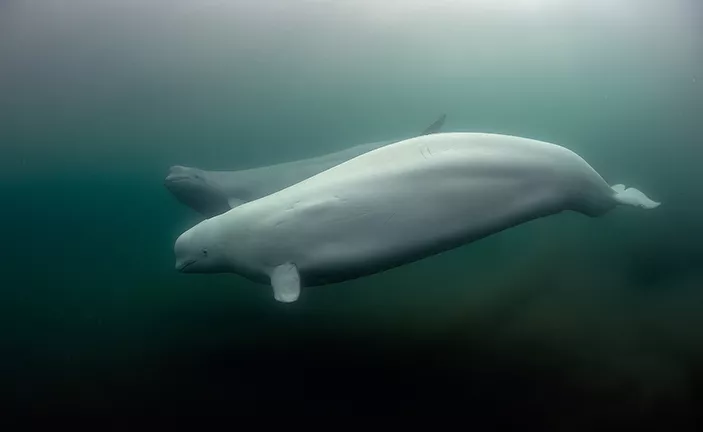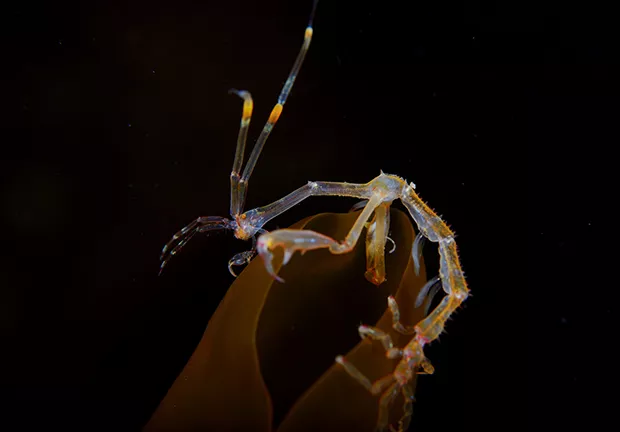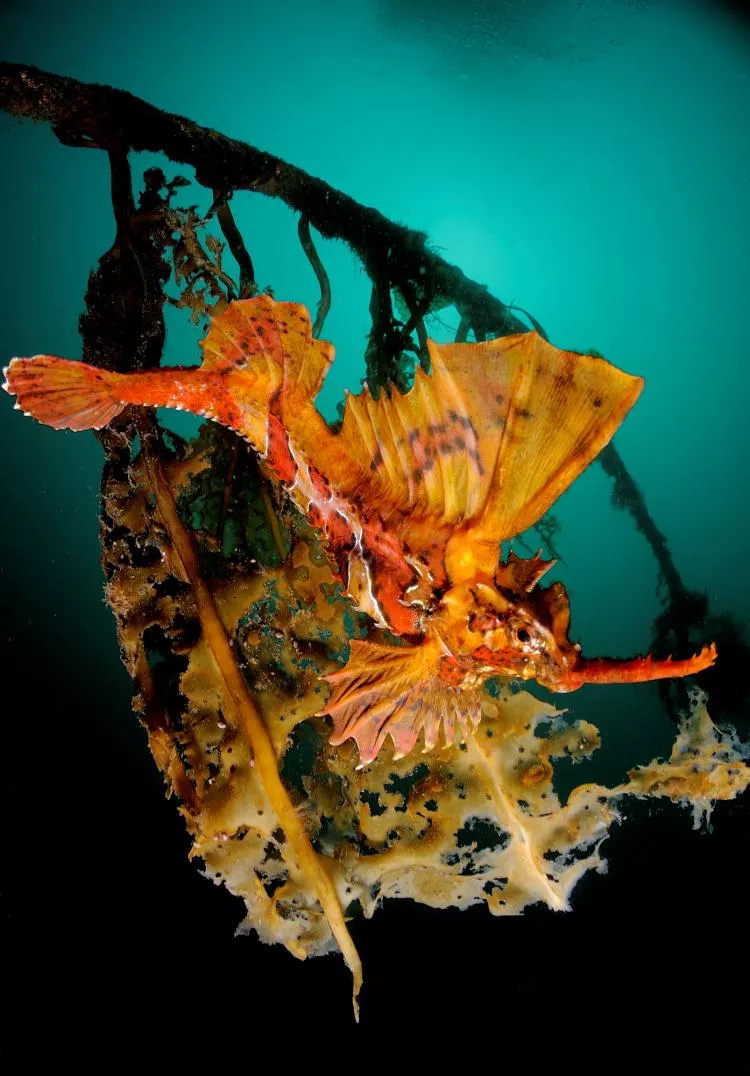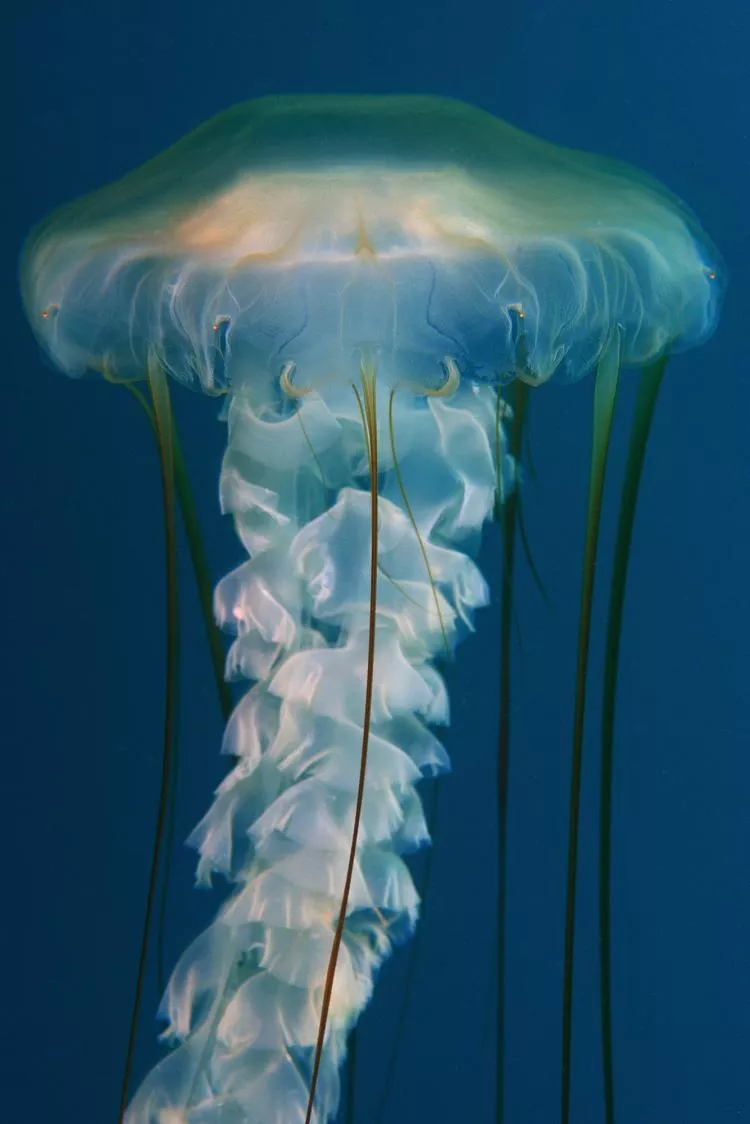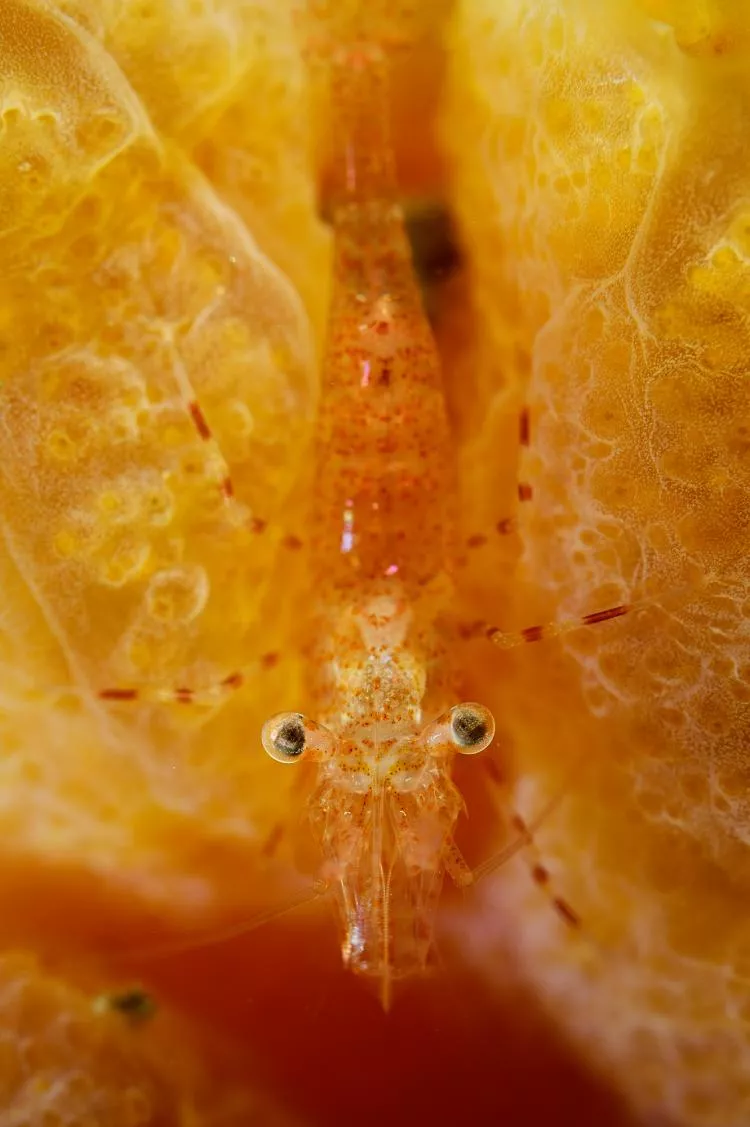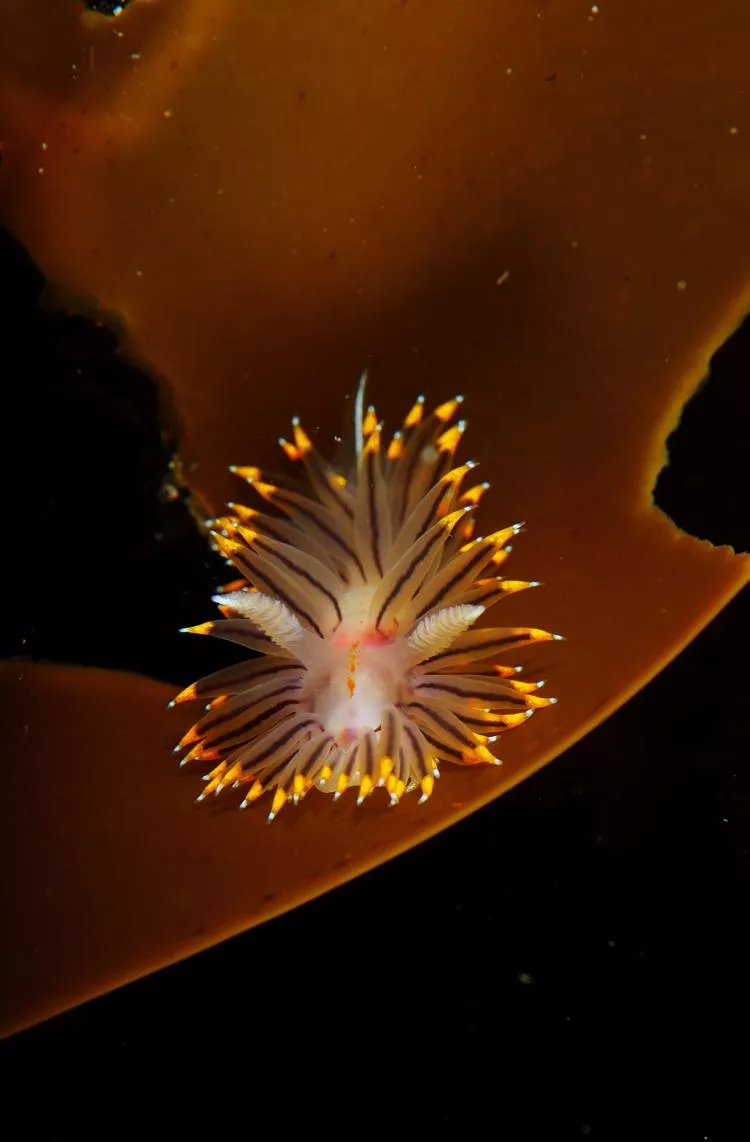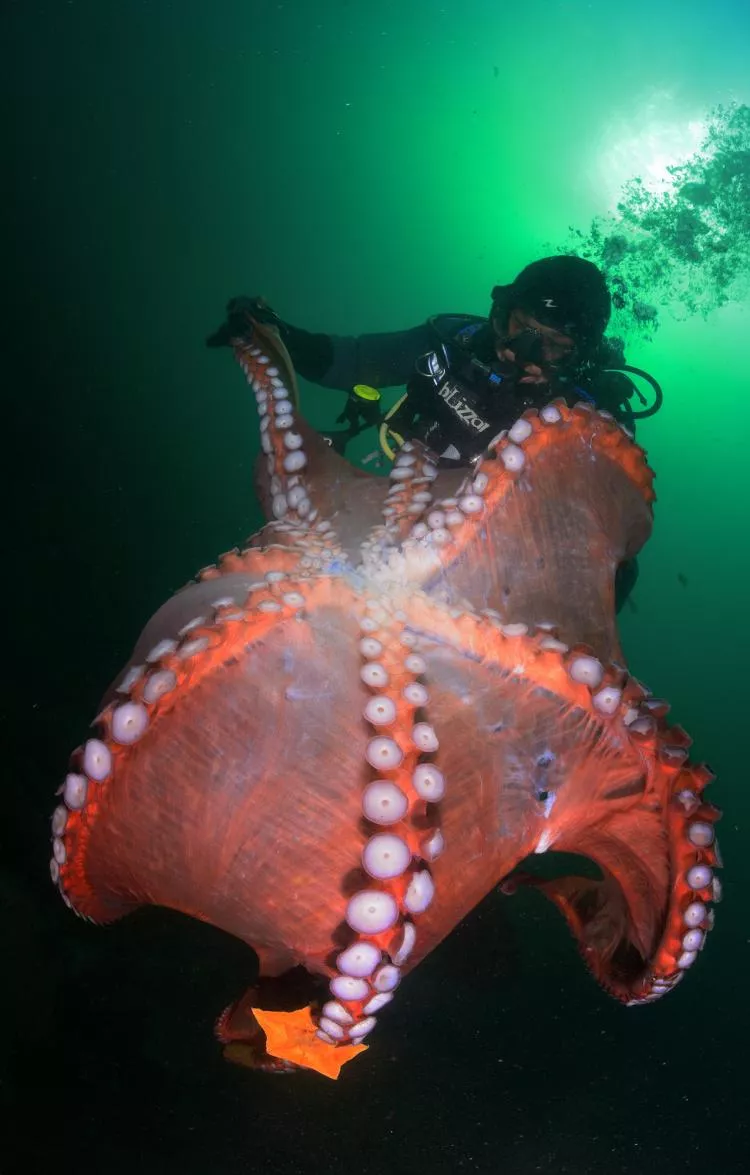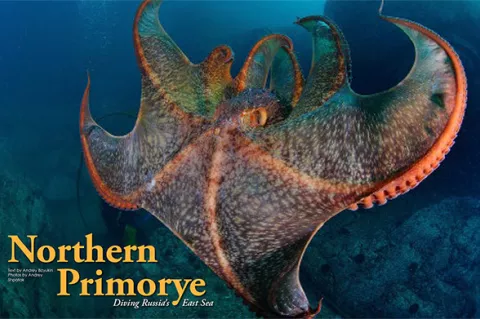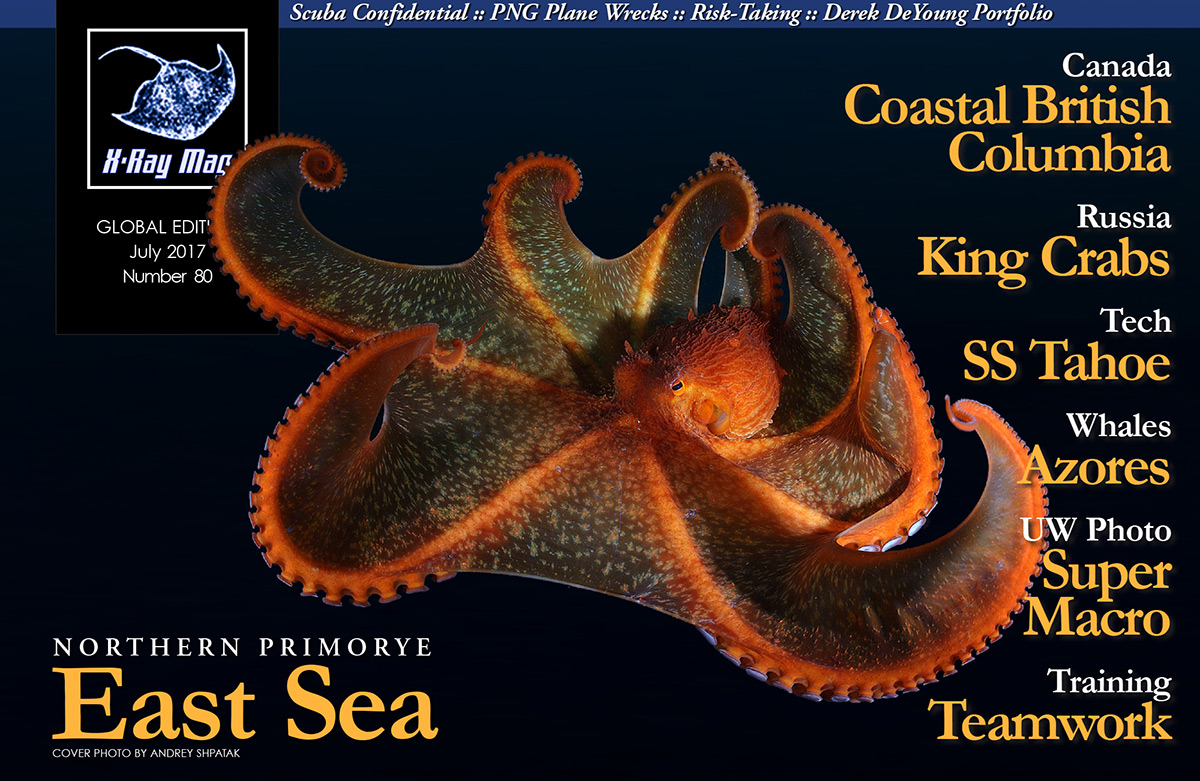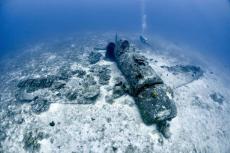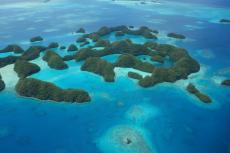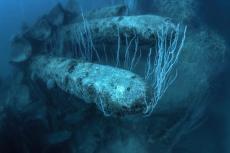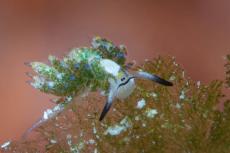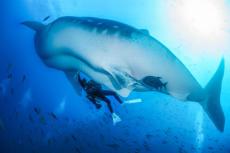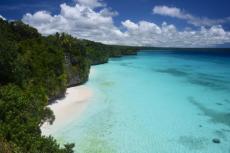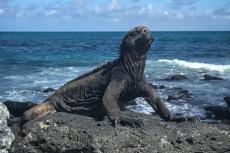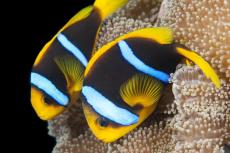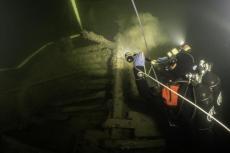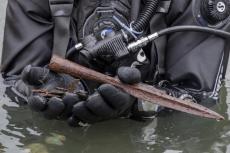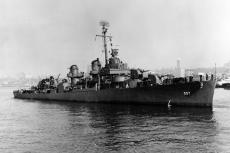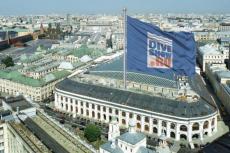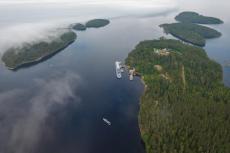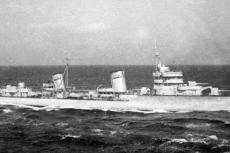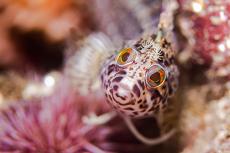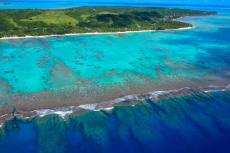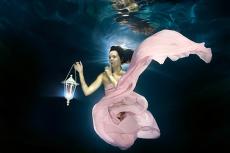With sanctions in recent years placed on Russia by Western governments, divers, once used to traveling abroad to exotic dive destinations, turned to their own country for inspiration. In doing this, Andrey Bizyukin discovered a diving paradise practically in his own backyard.
Contributed by
What can a diver in Russia do in the era of Western sanctions? I thought about heading east, when rapturous tales told by divers in the ‘70s and ‘80s sprung to mind. Back then, divers who had traveled there told me about the amazing, wonderful underwater world of the Pacific Coast of Russia. It was then, after having traveled around half the world and nearly becoming bored of exotic wanderings, that I realized that I did not know much about the underwater world of the far eastern end of my own country.
This area is called the Primorye province. It is huge and diverse in natural and climatic conditions. To choose the exact place to go in this vast territory, my dive buddy and I decided to re-read the classical books about places in the Far East written by famous Russian explorer Vladimir Arsenyev. I started with Dersu Uzala and immediately felt an uncontrollable desire to go the same way as the famous traveler to discover the modern Far East, to walk and drive to the places described in the book, to cross the Sikhote-Alin mountain range, head down to the city of Dalnegorsk and visit Tetyukhe (Ore Pier) in the East Sea Bay.
Getting there
We decided that we really wanted to dive this new destination! We began to plan the route. We got plane tickets to Vladivostok, the eastern capital of Russia, with a flight time of 9.5 hours and at a cost of around US$300 each way. Next, it was necessary to arrange transportation across the mountains, rivers and valleys of the Sikhote-Alin mountains and drive to the northern part of Primorsky—adding another 8-9 hours of driving time to our journey.
From words on a page to the destination before us, our dreams came true! After driving about 600km in a northeasternly direction from Vladivostok, we came to the alluring and unknown sea. And nestled on the shore of this treasured bay was a cozy holiday village named Smychka where we found the small dive center called Lucky Octopus (shpatak.livejournal.com).
History
People have lived here since the ancient times. The evidence of their life here can be found in the local caves. Later, the ancient culture of the Bohai developed. Not much information remains about it today. It is thought that the Bohai were a freedom-loving and pretty educated people, with their own spoken and written language. To start a family, a typical Bohai man would probably be a good archer, and be able to write. The Bohai people did not submit to the army of Genghis Khan and were destroyed in a war. When Russian explorers and settlers came here, very few people lived in this area, so the written history of Primorye practically started over from scratch.
The city of Dalnegorsk and Ore Wharf (Rudnaya Pristan) may be known to curious American or Swiss readers perhaps only because it is the birthplace of the famous Hollywood actor, Yul Brynner, who played the main character in the 1960 film, The Magnificent Seven. The local cape and lighthouse is named after Brynner’s family, and the lighthouse was built by the actor’s grandfather.
Local dive operator
Local inhabitant and dive instructor, Andrey Shpatak, met us here. He is the owner of the dive center located in the small village of Smychka. He was born and raised here, and has dived the area for over 40 years. Since receiving his first dive certificate in 1977, Andrey has done more than 4,000 dives. Therefore, he knows almost every dive site and every stone in the local waters. In 1998, he became interested in underwater photography, and since then, has never parted ways with his camera. He is a big fan of Nikon cameras, housings by Sea & Sea and Inon strobes. Andrey told us about his love of the sea, which started in childhood when he often swam in local waters to collect scallop and hunt for fish.
When questioned about the features of diving in this area, Andrey told us that Northern and Southern Primorye are very different, underwater. In Southern Primorye (the Vladivostok area), there are warmer waters and it is even possible to dive in wetsuits. In this southern region, there are interesting underwater landscapes. But in Northern Primorye, the water is always cold, and therefore, there is greater biodiversity of underwater life. Here, even in late summer, water temperatures at a depth of 20m can be very cold—around 3 to 5°C (37-41°F). There are also harsher conditions here than in the south, with frequent fluctuations in weather, rough seas and fog. In addition, it is often necessary to dive in open ocean, where there are no landmarks. Northern Primorye is indeed a zone for experienced divers.
Our host, Andrey, has been doing underwater photography in this region for over 39 years. In his vast photographic archives, there are photos of almost everything that can be found here, under the surface of the water.
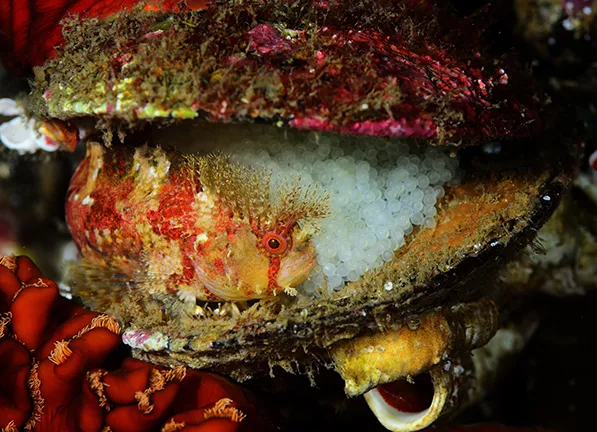
Critters and seasons
Crabs. According to Andrey, the months of April/May to June are a good time to photograph crabs. Hairy crabs and king crabs swim closer to the surface as cold water rises from the depths. Indeed, they can already be found at a depth of about 20m. These large crabs do not like warm water, so as summer approaches, they will return to greater depths. In wintertime, around February, when the temperature of the water is particularly cold, the crabs will rise almost to the surface. This is a rare moment when you can take pictures of these animated crabs at a depth of 1.5 to 2m.
Macro life—shrimp and nudibranchs. The month of May is the best season for macro photography, said Andrey. Huge numbers of shrimps arrive, including four to five species of mysis krill and countless species of nudibranchs. This is a period when a photographer can spend hours photographing a bright, colorful variety of miniature marine creatures, which are visible only to the keen eyes of a professional.
Fish and cuttlefish. In the middle of summer, from June to July, it is the time when a lot of fishes come into the bay, said Andrey, and they will remain here until the end of October. You can take photos of triggerfish, filefish, pufferfish, squids and cuttlefish. There are two kinds of cuttlefish that can be found: a large cuttlefish called Rossia pacifica and a tiny one called Sepiola birostrata.
Sea ravens and sculpins. At the end of summer and early autumn, from August to September, it is a good time to take photographs of sea ravens and sculpins of the family, Myoxocephalus, which come here to spawn.
Blennies and pricklebacks. Late September is the mating season for big fringed blennies, warbonnets (Japanese warbonnet or Chirolophis japonicus) and ornamented pricklebacks (such as Akiginpo, or Chirolophis saitone). One may also find a couple of larger fish species hiding their eggs in clefts, as well as small fishes spawning in empty mussel shells, which protect their offspring from the many predators in the area.
Jellyfish. In the autumn, there is also a huge number of jellyfishes such as Aurelia aurita, also called moon jellyfish; and lion's mane jellyfishes (Cyanea capillata), also known as the giant jellyfish, or the hair jelly, which comes close to the shore.
Giant Pacific octopus. The end of September and the beginning of October is when a lot of Giant Pacific octopi (Enteroctopus dofleini), also known as North Pacific giant octopus, come to the bay. Following the cold water, they can be found at depths ranging from 7 to 20m. Here in the bay, there are not many seals that like to eat octopi. That is why it is possible for divers to meet octopi just walking along on the seabed, and not hiding in their burrows. It is a time when divers can find up to 10 to 15 large individuals. There are so many octopi! According to long-term observations, their populations have not decreased.
Andrey told us that he met his first octopus in 1975, and since then, has figured out, in detail, the peculiarities of their behavior. When the octopus sees you; it always seeks your attention and comprehension. The octopus is a very clever animal. It lives about five years. They swim very fast and are sometimes impossible to catch on camera. The largest Giant Pacific octopus reported was 65kg. These particularly large individuals were not found here in the East Sea Bay, but the largest one seen and photographed by Andrey weighed around 30kg.
Caution: Divers should treat these octopi with great respect and not cause them any harm. This is the most important rule for the underwater photographer. Photographers can dive with octopi here by buddying up with Andrey. One can take totally unique images of these clever animals, thanks to the great experience Andrey has and his knowledge of their behavior. Andrey finds the octopus and lures it out of its hole, plays with it and helps you to take photos. But this playtime with the octopus cannot exceed seven to 10 minutes. The octopus gets tired quickly, so after each ten-minute photo session, Andrey takes it away from the photographers and leads it back to the same place, to the same hole where it was found, to let the octopus recover and take a break from the bright, blinding flashes of camera strobes. Andrey showed us his favorite photo in which an octopus folded into a shape of a lyre (ancient classical string instrument) as it departed from a diver.
Barbed hunchback poacher. In the bay, there are depths of 14 to 20m where it is often possible to find a small, bright red fish called a barbed hunchback poacher (Agonomalus proboscidalis), also known as the sea fox fish, from the Chanterelle family. There are about 20 species of these small fish.
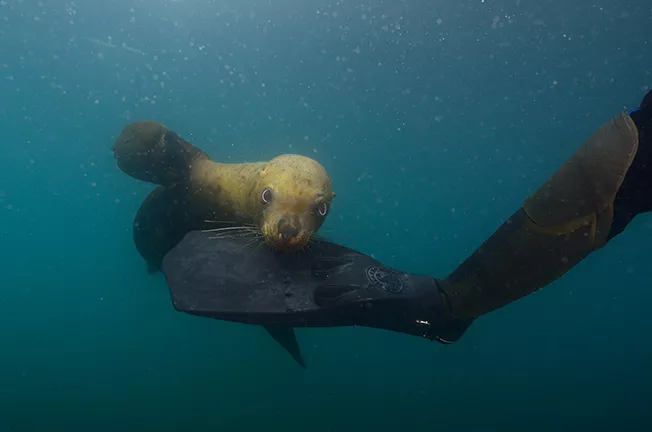
Steller sea lions. Sometimes, Steller sea lions come into the bay, said Andrey. Several years ago, he found them here and took photos of the species. But the sea lions do not always come close to divers. They love numerical superiority. When a lot of them go into the water near a diver, they may come close and display their beauty, grace and perfection. But when they are in a small group opposite several divers, they prefer to remain at a safe distance. Therefore, Andrey advises individual divers to watch and photograph sea lions, for the most part, alone.
Beluga whales. Once, two wild beluga whales (white whales) came into the bay, said Andrey. It was a mother and her calf. They stayed all summer, from June to October. They seemed to feel completely free, floating wherever they liked, coming close to divers and allowing divers to take photos of them in the shallow waters close to the shore. The beluga whales themselves initiated the contact. They seemed to be motivated by a natural curiosity, but after 10 minutes, they lost interest and left. But that period of time was more than enough for underwater communication and taking photos. Andrey said that it was quite a unique experience because meeting them, let alone to take pictures of the beluga whales in the wild, was a great experience for any underwater photographer. These images are his pride and joy.
Larga seals. The beaches and cliffs of the bay are choice havens for Larga seals, also known as spotted seals. But these animals are frightened of divers, said Andrey, and prefer to stay away from bubble-makers and photographers. Over the years, Andrey has been lucky to be able to photograph the seals when, on a very rare occasion, they came up to him, just one-and-a-half meters away, giving him an opportunity to take some good photos of this shy species.
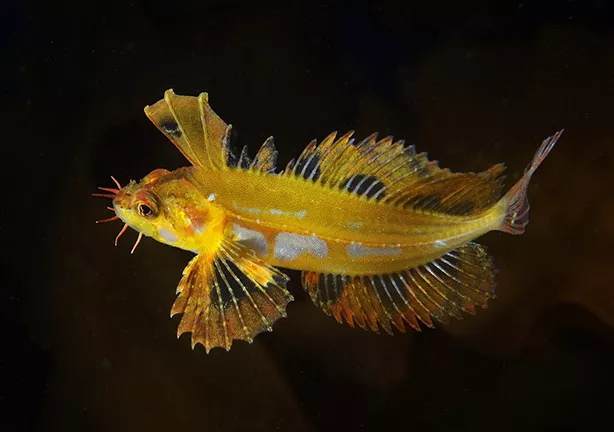
Final thoughts
According to Andrey, the main thing is to maintain a certain calmness, and then the sea itself decides when and what you can see—this is the motto of the underwater photographer. The most important thing for Andrey is to take a photo of each interesting object in the sea, each exciting animal underwater. His principle is: If you have seen it but did not take a photo of it, then you did not really see it! So, it is necessary to dive again and again, to look for the next opportunity to capture everything on camera. As a photographer, Andrey is a maximalist.
When asked whether he had any funny stories from his underwater adventures, he told us a story about an encounter he had with an octopus. One day, at a depth of 18m, he was attacked by a small octopus (around 5kg). With two tentacles, the octopus catapulted itself from the sea floor, placing two more tentacles on Andrey’s shoulders, and then placed two more tentacles on the valve of his second stage regulator. The octopus then removed the front cover of the valve on the front side of his regulator. The regulator membrane started leaking. Andrey took a breath and felt water entering his mouth. He then quickly placed his alternate second stage (which, ironically, is also called an “octopus”) into his mouth, so he could breathe normally, while just in front of his eyes, the plastic lid from his main regulator drifted away. The sly octopus had taken it off! So many different skills and intelligence can these wily octopodiformes show us!
After listening to Andrey’s compelling presentation, we realized that we might have been wasting a lot of our time and money traveling to distant, exotic locations and dive destinations, when diving paradise was, in fact, located very close to home, here in Primorsky, in the Far East of Russia. We immediately prepared all our diving gear and headed out to sea with our experienced and seasoned captain, Andrey Shpatak. See you in Primorye! ◼︎
For more information, go to: shpatak.livejournal.com

